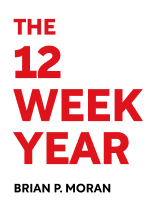
This article is an excerpt from the Shortform book guide to "The 12 Week Year" by Brian P. Moran. Shortform has the world's best summaries and analyses of books you should be reading.
Like this article? Sign up for a free trial here .
What is the difference between lag and lead indicators? Which aspects of performance do they measure?
Lag and lead indicators are two types of performance measures aimed at tracking progress towards the set objectives over time. Lag indicators measure the outcomes of your effort, while lead indicators measure the steps taken to achieve those outcomes.
Keep reading to learn about the lag and lead indicators.
What Is the Difference Between Lag and Lead Indicators?
Lag indicators measure results, such as dollars earned, pounds shed, sales made, and pages written. Lead indicators measure what you’ve actually done to achieve those results, such as marketing tactics, exercise routine, number of sales calls, and hours spent writing. You need to balance your focus between lag and lead indicators to gain an accurate measure of success.
Most people naturally keep track of their lag indicators. It’s human nature to measure how well you’re meeting your desired goals. Whereas you do want to track your overall progress, you will grow more when you focus your measurements on your lead indicators.
Measure your lead indicators each week by calculating the percentage of tasks completed. Divide the number of tasks completed with the number intended to get the resulting percentage of success.
- For instance, if you were supposed to complete two tasks a day during the five-day work week, you should have 10 tasks completed by the end of the week. If you only did three, your operational percentage would be 30%.
The next step is to determine whether this low rate of success is due to a faulty plan or poor execution. You should be able to look at your plan to see if the strategies and tactics predicted actually combine to achieve your desired outcomes. If not, change your strategies. However, you can only know whether your plan is faulty if you’ve sincerely put effort into optimal execution. If you look at your plan and know you didn’t attempt to execute to the best of your ability, the blame is on you, not the plan, and you can adjust your behavior accordingly for better execution.
Far too often, people abandon the plan without an earnest effort to execute it. They think their failure to achieve means the plan is not good, but they’re not being honest about their behavior. You’ll feel discomfort when you start to score your execution because it’s human nature to avoid negative feedback. When you aren’t brave enough to admit your flaws, you scapegoat the mission to protect your self-esteem. This process is so common, researchers call it productive tension.
Productive tension occurs when you know you aren’t living up to your potential. You feel guilty about your inactivity, so you take the easy way out by quitting. However, productive tension can be a useful tool if you embrace the discomfort. You can use the tension to spur resilience and commit to working harder.

———End of Preview———
Like what you just read? Read the rest of the world's best book summary and analysis of Brian P. Moran's "The 12 Week Year" at Shortform .
Here's what you'll find in our full The 12 Week Year summary :
- How to create a structured plan to rapidly accomplish goals
- Why annual goals don't work
- How to create urgency by working in 12-week increments






